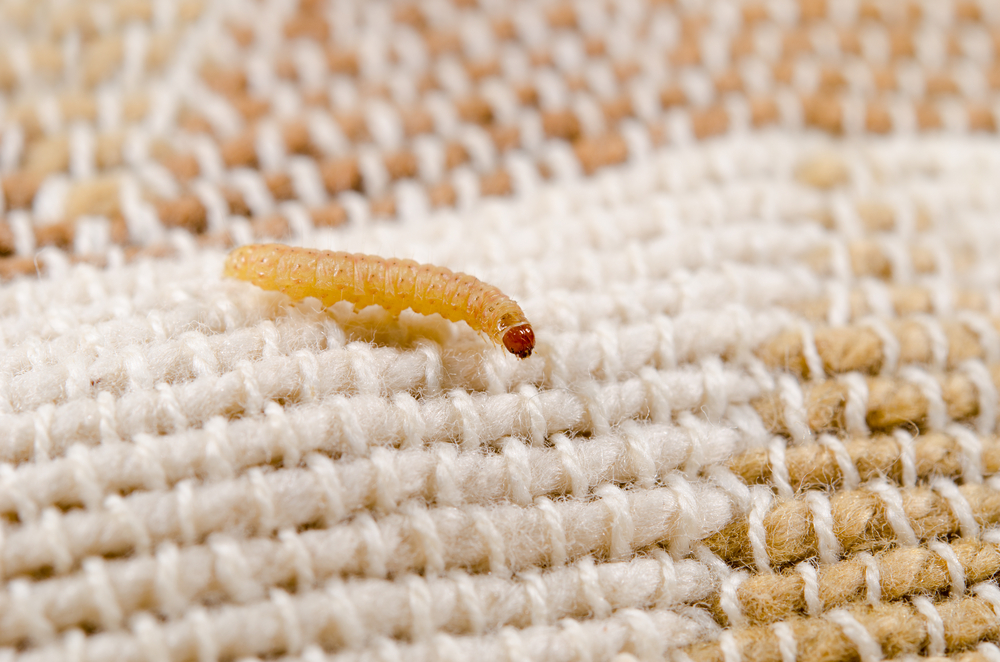Addison's 3-in-1 Toronto Clothing Moth Extermination
Addison Pest Control is the moth specialist. We have never failed to eliminate a moth infestation.
You want…
To quickly eliminate a clothing moth infestation, stop the destruction of your clothing, linens and fabrics...
An affordable, professional, honest and warrantied moth exterminator...
An environmentally conscious treatment that is safe for the whole family, including your pets.
Here’s what to expect:
Answers to all of your questions
A no-obligation quote over the phone in seconds
Flexible scheduling with 24/7 same-day service throughout the GTA.
No hidden service fees or follow up costs.
Addison has...
Decades of experience
A trusted track record
All-inclusive warranty
Comprehensive customer service
Rigorously trained technicians
Tried and tested extermination methods
The safest, most effective insecticides
Service Area
Downtown Toronto, Midtown, Burlington, Chinatown, the Annex, Little Italy, Harbourfront, Cabbagetown, Summerhill, Forest Hill, Rosedale, the Junction, Parkdale, Bloordale, Scarborough, North York, Brampton, Mississauga, Vaughan, Markham, Pickering, Hamilton, London, and beyond!
Key Facts about Clothing Moths
most common clothing moth is the webbing clothes moth, other types of clothing moths common in Canada are the casemaking clothing moth and the carpet moth
active at night time prefer dark undisturbed areas such as closets or storage cellars
attracted to light sources
may be seen flying against lights, lamps, window panes
only the moth larvae are damaging pests
larvae can be highly destructive to fabrics, linens, and clothing
feed on animal-based textiles such as wool, fur, and feathers
also feed on any natural fibres such as cotton, linen, silk
will even feed on synthetic fabrics if contaminated by perspiration, urine, milk, beer, fruit juice, or other sugar or protein
attracted to sweat stains on clothing and the protein in dead skin cells left on fabrics
Our process
Step 1: Moth Heat Treatment
Category:
Physical
Equipment:
Handheld heat treatment gun.
Method:
Direct heat applied locally to areas of elevated moth activity
Strengths:
Heat kills moth eggs.
No damage to furniture.
Instantly kills all bugs and eggs treated.
Avoids pesticide resistance.
Weakness
No residual protection.
Only kills the bugs and eggs that are visible and accessible to technicians.
Not sufficient without other complementary bed bug extermination techniques.
Step 2: Moth Powder Treatment
Category:
Physical + Chemical
Equipment:
Power duster
Method:
A fine silica dust insecticide is injected into all crevices and wall cavities through electrical sockets and gaps underneath baseboards.
Electrical items, such as a power bars, are also treated with powder.
Strengths:
Cuts up the abdomen of bugs that pass through the powder
Coats the insides of the wall cavities to create a protective powder barrier around your home
No moths can spread to or from attached houses, adjacent apartments or condo units.
Essential lasting protection.
Fully approved by the Ontario Ministry of the Environment, safe and non-toxic for humans and animals of all shapes and sizes.
Weakness
Only suitable for crack and crevice treatment.
Step 3: Moth Spray treatment
Category:
Chemical + Residual
Equipment:
Precision surface sprayer
Method:
A fine mist of residual spray is applied light fixtures, windowsills, door jambs, walls, baseboards, and other surfaces in areas of elevated moth activity throughout the home.
Strengths:
Kills moths on contact and remains active as a protective surface treatment to continue to kill moths as they come out of hiding.
Keeps your home and furniture protected for up to 6 months.
Fully approved by Ontario Ministry of Environment, safe and non-toxic for humans and animals of all shapes and sizes.
Fully approved by the Ontario Ministry of the Environment, safe and non-toxic for humans and animals of all shapes and sizes.
Weakness
If used improperly, may promote pesticide resistance
Beware of Discount Pest Control
These companies use low quality or low concentration surface sprays with only 10 to 14 days of protection.
The tip off is when they offer to do a “follow-up spray” two weeks after the first treatment. While this may seem extra thorough, moths may remain hidden without feeding for extended periods of time and new eggs can hatch up to two weeks after that point.
By this time the budget treatment will have long worn off and the new population of moths will be free to re-infest your home. These budget services can breed pesticide resistance in the pests in your home, making future treatments increasingly challenging.
What you need to know for an effective clothing moth treatment
If you suspect you have a clothing moth infestation clear and complete information is the first step to getting rid of them. Here are a few facts, myths, and tips that will help you to make a well informed decision about what to do next.
How to identify Clothing Moths
Adults
90mm wingspan
12 mm in length
silvery brown wings during flight
pale yellow-brown coloured while resting
tuft of red hairs on the head
Larva
12 mm in length
creamy white caterpillar shape
a brown head with no ocelli
Like other moths, all damage is done by the Larvae.
Look for them in the cuffs and folds of upholstery found on clothing and furniture
Recognition
easily mistaken for pantry moths, also known as Indian meal moths.
One quick distinguisher:
clothing moths fly in a straight line
Indian meal moths have an oscillating flight path
Can I get rid of clothing moths on my own?
If you catch a clothing moth infestation in its earliest stages it is possible to eliminate it without a professional pest control company.
Unfortunately, going this route does take more time than professional extermination and the infesting moths may have time to do serious damage to precious fabrics, expensive clothing, drapes, and furniture before you can successfully eliminate them.
Here are some tips for getting rid of clothing moths on your own:
launder your entire clothing wardrobe and linen closet on a hot wash and a hot dry setting
after laundering, store all fabrics in airtight bags or bins and bring them out only when they will be used or worn
Use high heat steam to thoroughly steam couches, chairs, carpets, drapes, mattresses, and box springs
Clothing in -40ºC storage will eliminate larvae. Most freezers will only cause larvae to hibernate
use pheromone baited sticky traps in your clothing and linen storage to gauge the severity of an infestation
Clothing moth larva are voracious eaters and can do significant damage to your fabrics in a short period of time. If you are cannot successfully eliminate an infestation with these do-it-yourself steps call us to get a no-obligation quote in seconds, and schedule a treatment.
How do I know if I have a clothing moth infestation?
Spotting a single clothing moth does not mean you have a full blown infestation, these moths can multiply quickly and do significant damage to clothing and fabrics in a short period of time.
If you begin to see moths on a regular basis it is time consider implementing a professional pest control program.
Be on the lookout for these signs of a clothing moth infestation:
Sightings
Small worm-like larvae on clothing, linens, blankets, carpets or any other natural or synthetic fabric
Shed larval skins larval webbing on fabrics
Adult moths flying around your home
Damage
Tracks or holes chewed in sweaters, linens etc.
larvae eat fabrics voraciously during their development
particularly attracted protein or carbohydrate deposits on soiled clothing
Where to look for clothing moths
closets
wardrobes
linen chests
storage cellars
carpets
seams of couches and chairs
cuffs of shirts and pants
Give us a call to get a for a no-obligation moth extermination quote for in seconds.
How did clothing moths get into my home?
adults are able flyers
gain entry through open windows and open doors
insecure window screens, weather stripping or door sweeps
eggs, larvae or adults may enter home on thrift clothing
some retail warehouses are infested by moths, so even new clothing may carry clothing moths
used furniture and fabrics
Laundering used and new items when you bring them into the home will eliminate any moth larvae, or eggs that may be attached to these items.
What do clothing moths eat?
adult clothing moths do not eat fabrics
moth larvae are damaging pests that eat a variety of textiles and fabrics
larvae can be highly destructive to fabrics, linens, and clothing
feed on animal based textiles such as wool, fur, and feathers
also feed on any natural fibres such as cotton, linen, silk
will even feed on synthetic fabrics if contaminated by perspiration, urine, milk, beer, fruit juice or other sugar or protein
attracted to sweat stains on clothing and the protein in dead skin cells left on fabrics
How serious are clothing moths?
cause significant damage to treasured clothing, linens and fabrics
damage may be in concealed areas on garments
check areas beneath collars or cuffs of clothing, in folds of material on furniture and carpeted areas beneath undisturbed furniture
How can Addison help eliminate and prevent a clothing moth infestation?
At Addison, we use professional grade pheromone baited sticky traps to monitor the severity of a moth infestation and locate the areas of increased activity
As part of our service, we conduct a 360º home inspection to offer precise insights on how to cut off moth entry points
Inspect all screens, exhaust vents, weather stripping, door sweeps
3-step residual insecticide, heat and powder treatment eliminates moths, larvae and eggs efficiently and safely
Learn More
“My partner and I were very happy with our Addison Pest Control experience. Connor spoke with us for nearly half an hour via phone answering all our questions about our moth problem, the treatment process, and how to prepare.
On the day of the appointment, Michael and Cam arrived right on time. They were super friendly, professional, and reassuring, and made us feel like they would take good care of our home.
We’re very happy with the job they did, and wouldn’t hesitate to recommend their services to friends and family. Thanks!”








